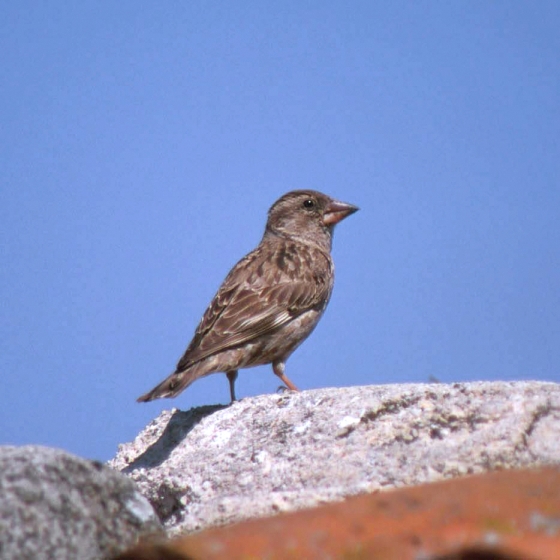Rock Sparrow

Introduction
Found at high altitudes throughout southern Europe and central Asia, this normally sedentary species is an extremely rare visitor to Britain.
Rock Sparrow was added to the British List following a record of an individual at Cley, Norfolk, in June 1981.

Key Stats
Status and Trends
Conservation Status
Population Size
Population Change
Population trends of this scarce species are not routinely monitored.
Distribution
This vagrant has not been recorded in the UK for many decades and as such cannot be mapped.
European Distribution Map
Distribution Change
This vagrant is too rarely reported to map distribution change.
Seasonality
This species has been too rarely reported to BirdTrack during 2011–22 to properly assess seasonality.
Movement
Britain & Ireland movement
Biology
Survival and Longevity
Survival is shown as the proportion of birds surviving from one year to the next and is derived from bird ringing data. It can also be used to estimate how long birds typically live.
Classification, names and codes
Classification and Codes
- Order: Passeriformes
- Family: Passeridae
- Scientific name: Petronia petronia
- Authority: Linnaeus, 1766
- BTO 5-letter code: ROCSP
- Euring code number: 16040
Alternate species names
- Catalan: pardal roquer
- Czech: vrabec skalní
- Danish: Stenspurv
- Dutch: Rotsmus
- Estonian: kaljuvarblane
- Finnish: kalliovarpunen
- French: Moineau soulcie
- German: Steinsperling
- Hungarian: köviveréb
- Icelandic: Steinspör
- Italian: Passera lagia
- Latvian: akmenzvirbulis
- Lithuanian: paprastasis uolažvirblis
- Norwegian: Steinspurv
- Polish: wróbel skalny
- Portuguese: pardal-francês
- Slovak: skalník žltohrdlý
- Slovenian: skalni vrabec
- Spanish: Gorrión chillón
- Swedish: stensparv

